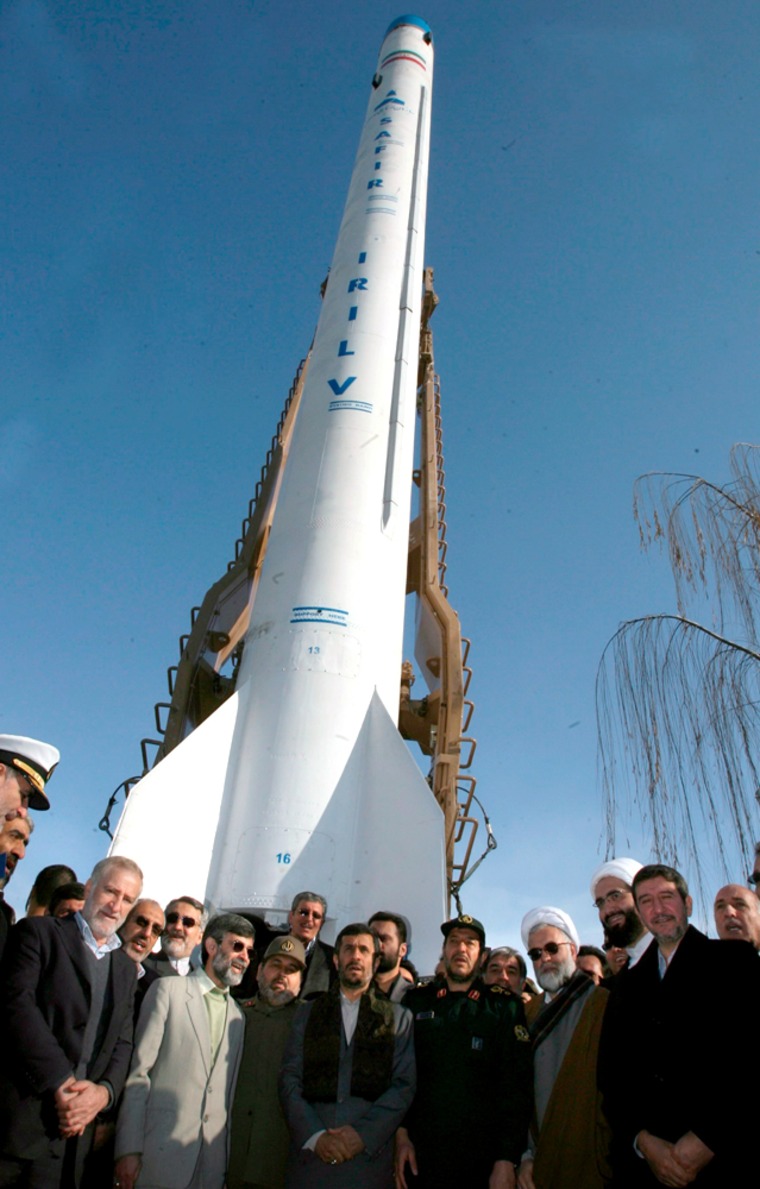Iran launched a research rocket and unveiled its first major space center, state television reported Monday, the latest steps in a program many fear may be cover to more fully develop its military ballistic missiles.
State television showed live images of the event from the space center, with President Mahmoud Ahmadinejad issuing the launch order in the latest step towards Iran's long declared goal of developing a space program.
"The first Iranian rocket Explorer-1 was fired into space," state-run television reported Monday, without specifying the exact altitude. "With the launch, Iran has joined the world's top 11 countries possessing space technology to build satellites and launch rockets into space."
Yet the same technology used to construct rockets to put satellites in space can also be used to deliver warheads, and Iran's space program, like its nuclear power program, has provoked unease abroad.
"It is just another troubling development, in that the kinds of technologies and capabilities that are needed in order to launch a space vehicle for orbit are the same kinds of capabilities and technologies that one would employ for a long-range ballistic missile," U.S. State Department spokesman Sean McCormack said Monday.
"And, of course, the U.N. Security Council and other members of the international system have expressed their deep concern about Iran's continuing development of medium- and long-range ballistic missiles."
Despite the anxiety over Iran's space program, it is not exactly clear how developed it is, or if the latest launch actually reached the internationally agreed on beginning of "space," set at 60 miles above the earth.
Analysts have expressed doubts about such technological achievements announced by the country in the past. Iran launched its first domestically built rocket last February, which soared to the edge of space but did not reach orbit level.
Slideshow 12 photos
Month in Space: January 2014
Ham radio satellites — the lowest flying satellites — orbit between 100-300 miles, while communication, weather and global-positioning satellites fly between 250-12,000 miles up.
In 2005, the government said it had allocated $500 million for space projects in the next five years. Also in 2005, Iran launched its first commercial satellite, Sina-1, into orbit from a Russian rocket.
Iran says it wants to put its own satellites into orbit to monitor natural disasters in the earthquake-prone nation and improve its telecommunications. Iranian officials also point to America's use of satellites to monitor Afghanistan and Iraq and say they need similar abilities for their security.
Before the launch, Ahmadinejad opened Iran's first major space center, which includes an underground control station and space launch pad.
"We need to have an active and influential presence in space," he said at the inauguration ceremony.
Ahmadinejad also unveiled the country's first domestically built satellite, called Omid, or Hope.
State TV said the satellite took ten years to build, and the official news agency IRNA reported that it would be launched into orbit sometime in roughly the next twelve months.
"The research rocket is part of preparations for the launch of a satellite into orbit," said IRNA.
Iranian officials have suggested that the rocket launched last February's was a "sounding rocket," built to soar to a maximum altitude of 93 miles and used to conduct high-altitude measurements and testing. It was not immediately clear if the rocket launched Monday was identical.
In 2005, Iran launched its first commercial satellite on a Russian rocket, in a joint project with Moscow, which appears to be the main partner in transferring space technology to Iran.
Iranian officials have said the country wants to launch a satellite on an indigenous rocket and indicated they are developing a Shahab-4 missile to do that. Iran's powerful ballistic missile, the Shahab-3, is believed to have a range of at least 800 miles, putting Israel and much of the Middle East in range. In November, Iran said it had manufactured a new missile, the Ashoura, with a range of 1,200 miles.
Iran hopes to launch four more satellites by 2010, the government has said, to increase the number of land and mobile telephone lines to 80 million from 22 million. It also hopes to expand its satellite capabilities to increase Internet users to 35 million from 5.5 million.
Associated Press writer Desmond Butler contributed to this report from Washington, DC.

